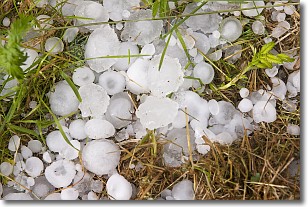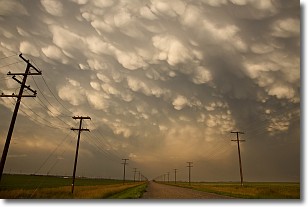Weather Alert in Montana
Hydrologic Outlook issued May 7 at 2:39PM MDT by NWS Billings MT
AREAS AFFECTED: Big Horn, MT; Carbon, MT; Golden Valley, MT; Park, MT; Stillwater, MT; Sweet Grass, MT; Wheatland, MT; Yellowstone, MT; Sheridan, WY
DESCRIPTION: ESFBYZ Warm temperatures are forecast through early next week. This is expected to increase snowmelt across area mountains, resulting in a significant increase in flows on area rivers and streams by this weekend. While flooding is not anticipated on larger rivers and streams, there is a chance that some smaller streams and creeks could reach bankfull in and near the foothills, producing minor flooding. At the very least stream flows will be much higher with the increased snowmelt. Water rises will occur first on small streams and creeks flowing out of the foothills, eventually arriving on larger rivers and streams. The rate and strength of the water rises will be determined by how warm temperatures get over the mountains, as well as whether temperatures remain above freezing overnight. Any precipitation will also result in strong and sudden water rises. For those living near waterways, this may be the last chance to finalize preparations for runoff season. Move any livestock and equipment to higher ground away from waterways. Any stream bank stabilization activities should be completed as soon as possible. For those planning recreation activities on or near waterways, be prepared for changing conditions and significantly higher flows. Erosion will also increase as stream flows increase, making streambanks unstable. Please stay well away from streambanks when water is running fast, and be especially vigilant with children. Erosion will undercut the bank and can break off taking the bank and anyone standing on it into a very cold raging current. Stay tuned to the forecast for any watches, advisories, or warnings. Please report any flooding to local law enforcement and have them relay the report to the National Weather Service.
INSTRUCTION: N/A
Want more detail? Get the Complete 7 Day and Night Detailed Forecast!
Current U.S. National Radar--Current
The Current National Weather Radar is shown below with a UTC Time (subtract 5 hours from UTC to get Eastern Time).

National Weather Forecast--Current
The Current National Weather Forecast and National Weather Map are shown below.

National Weather Forecast for Tomorrow
Tomorrow National Weather Forecast and Tomorrow National Weather Map are show below.

North America Water Vapor (Moisture)
This map shows recent moisture content over North America. Bright and colored areas show high moisture (ie, clouds); brown indicates very little moisture present; black indicates no moisture.

Weather Topic: What is Hail?
Home - Education - Precipitation - Hail
 Next Topic: Hole Punch Clouds
Next Topic: Hole Punch Clouds
Hail is a form of precipitation which is recognized by large solid balls or
clumps of ice. Hail is created by thunderstorm clouds with strong updrafts of wind.
As the hailstones remain in the updraft, ice is deposited onto them until their
weight becomes heavy enough for them to fall to the earth's surface.
Hail storms can cause significant damage to crops, aircrafts, and man-made structures,
despite the fact that the duration is usually less than ten minutes.
Next Topic: Hole Punch Clouds
Weather Topic: What are Mammatus Clouds?
Home - Education - Cloud Types - Mammatus Clouds
 Next Topic: Nimbostratus Clouds
Next Topic: Nimbostratus Clouds
A mammatus cloud is a cloud with a unique feature which resembles
a web of pouches hanging along the base of the cloud.
In the United States, mammatus clouds tend to form in the warmer months, commonly
in the Midwest and eastern regions.
While they usually form at the bottom of a cumulonimbis cloud, they can also form
under altostratus, altocumulus, stratocumulus, and cirrus clouds. Mammatus clouds
warn that severe weather is close.
Next Topic: Nimbostratus Clouds
Current conditions powered by WeatherAPI.com




